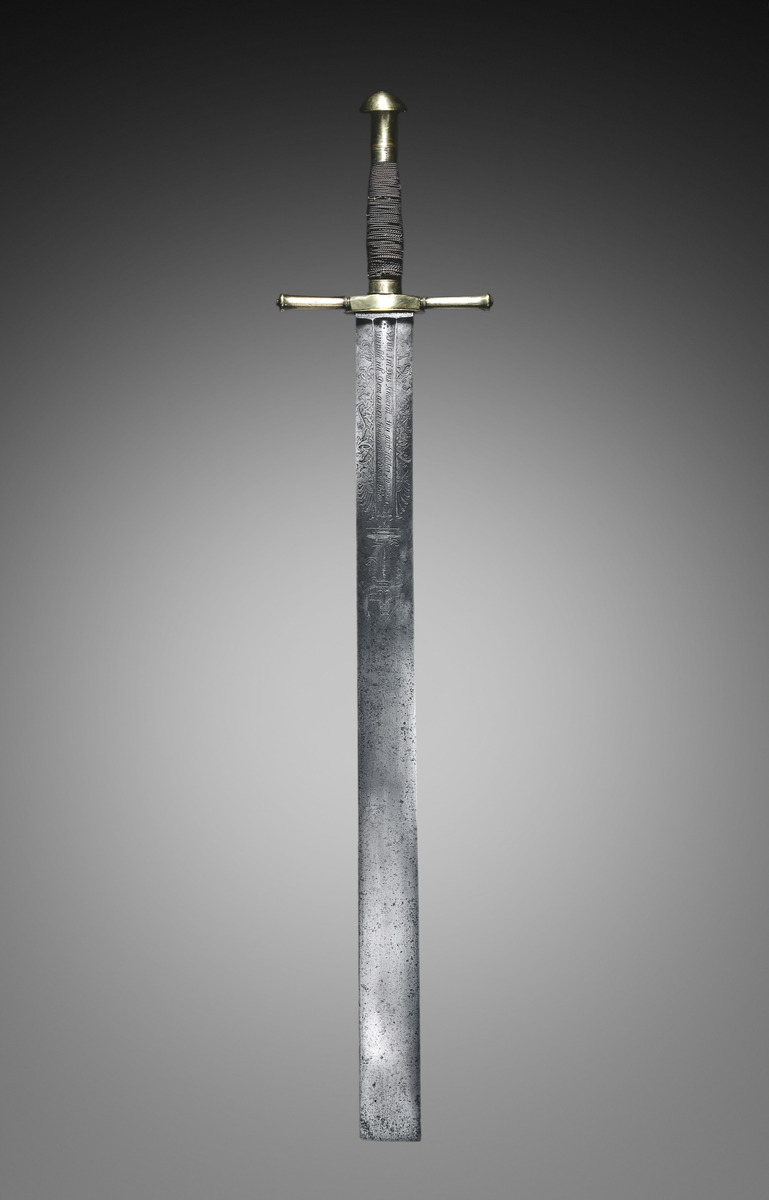Source

Source:
Executioner's Sword, Germany, late 17th Century, steel, wood, brass
and copper wire. Cleveland Museum of
Art
https://www.clevelandart.org/art/1916.1620
Despite efforts by some “enlightened despots” to do away with judicial torture, capital punishment remained a prominent part of the European judicial system during the long eighteenth century. Although executions were rarely carried out by sword by this time, the executioner’s sword still held important symbolic meaning during the period. It was often engraved with religious and moralistic images and inscriptions that spoke to the supposedly redemptive death penitent sinners received at the hands of the executioner. Thus, this example, which dates from the late seventeenth century, bears an inscription in German that reads “When I raise this sword, so I wish that this poor sinner will receive eternal life.”

Source:
Executioner's Sword, Germany, late 17th Century, steel, wood, brass
and copper wire. Cleveland Museum of
Art
https://www.clevelandart.org/art/1916.1620
Cleveland Museum of Art